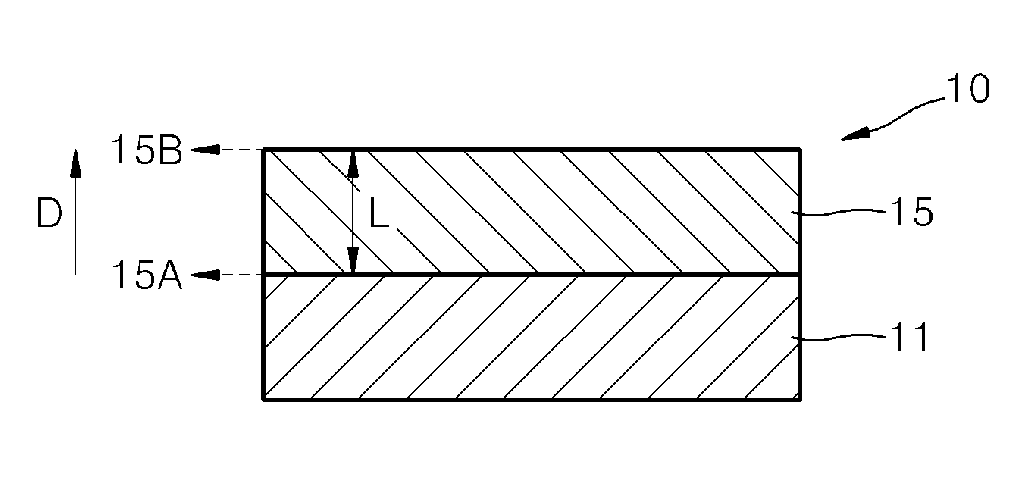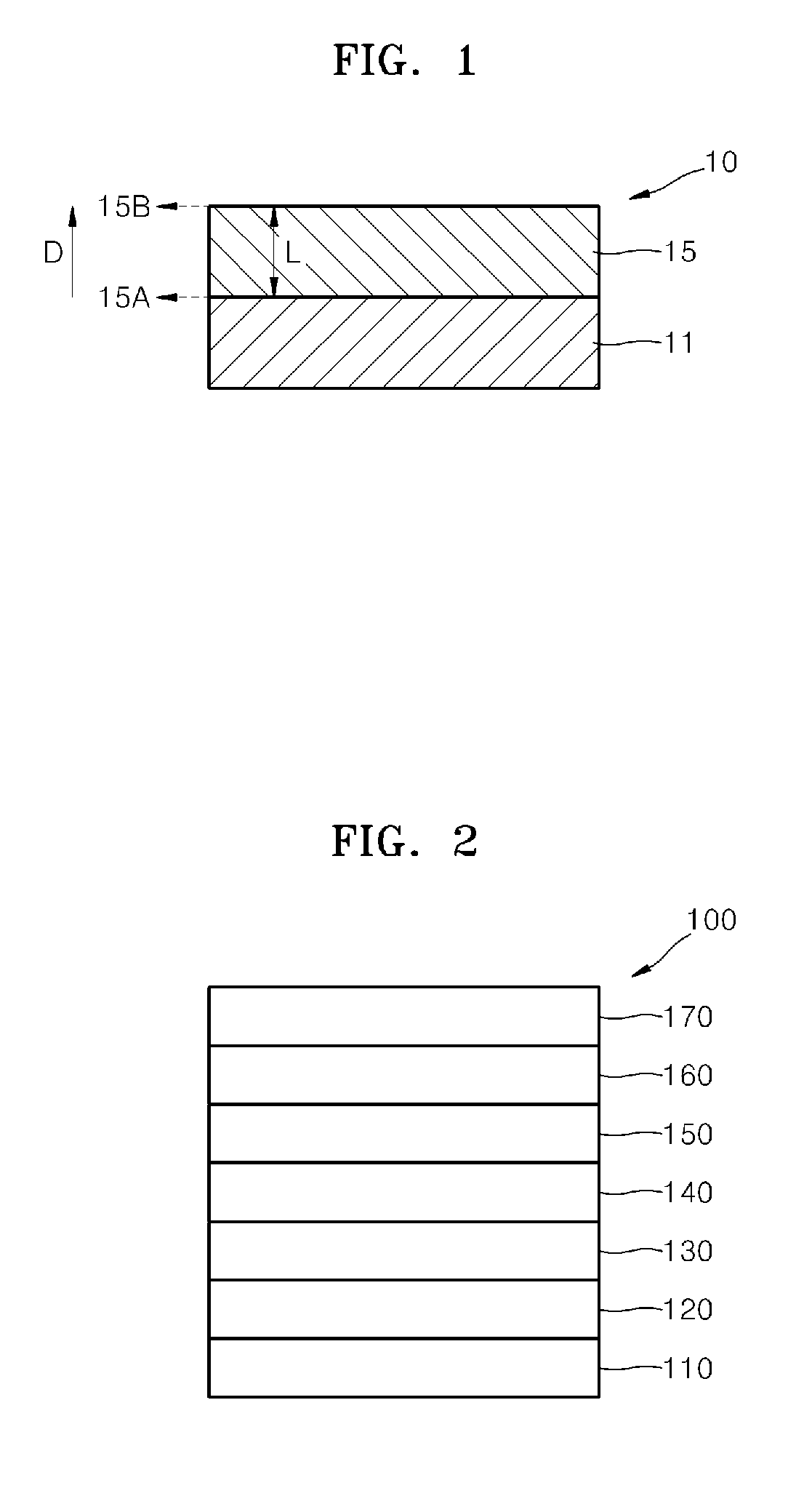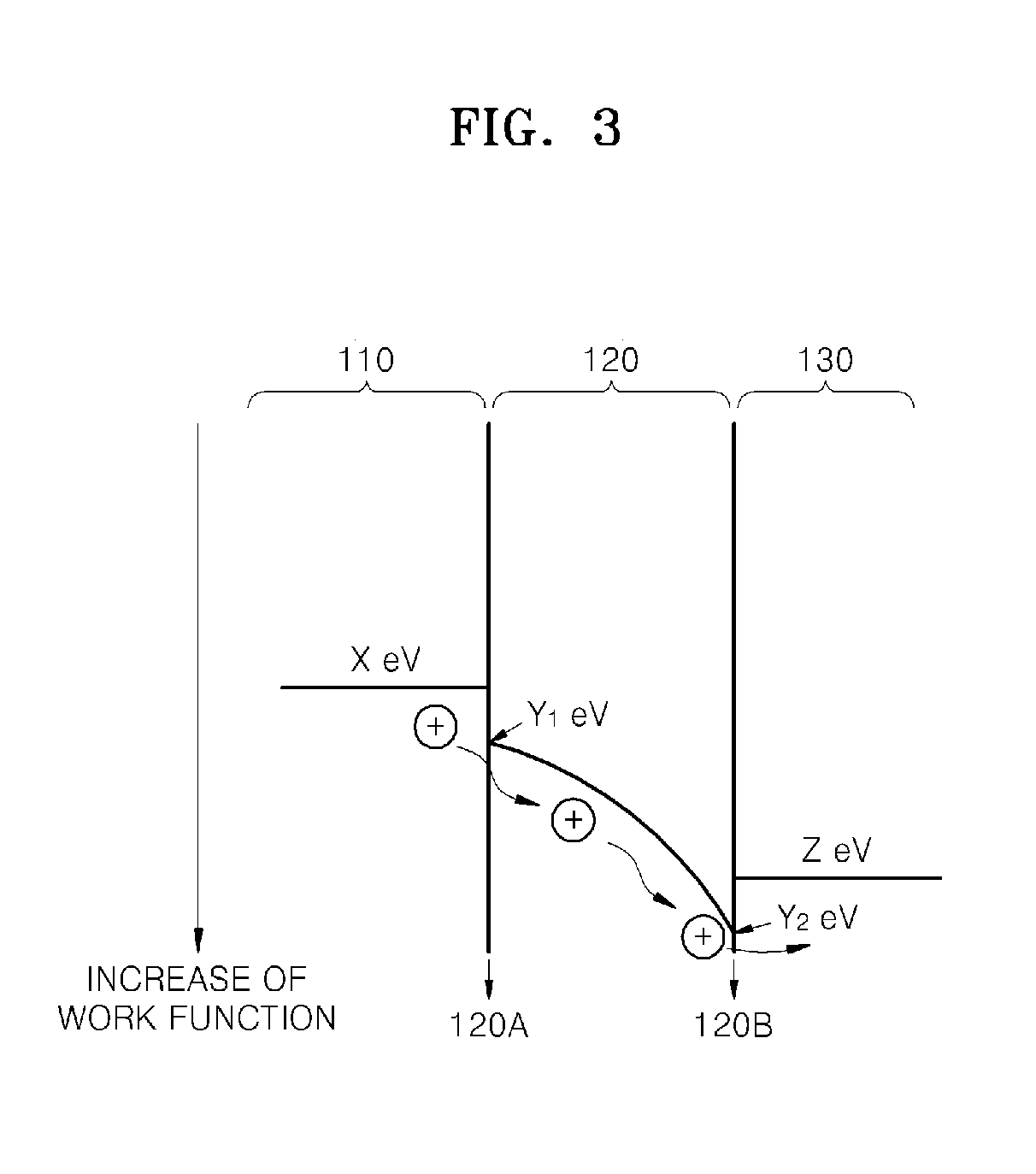Simplified organic electronic device employing polymeric anode with high work function
a polymer anode, organic technology, applied in the direction of thermoelectric devices, organic semiconductor devices, other domestic articles, etc., can solve the problems of brittleness and bending of indium tin oxide (ito) electrodes that are commonly used in organic light-emitting diodes and organic solar cells, and the inability to apply flexible devices, etc., to achieve the effect of simplifying the structure of organic solar cells
- Summary
- Abstract
- Description
- Claims
- Application Information
AI Technical Summary
Benefits of technology
Problems solved by technology
Method used
Image
Examples
example 1
Preparation of High-Work-Function and High-Conductivity Electrode (I)
[0187]A composition for forming an electrode (100% by weight) including a highly conductive poly(3,4-ethylenedioxythiophene):poly(styrenesulfonate)(PEDOT:PSS) solution having a conductivity of 0.3 S / cm (PH500 manufactured by H.C. Starck GmbH, wherein the content of PSS per 1 part by weight of PEDOT was 2.5 parts by weight), a Polymer 100 solution (prepared by dispersing Polymer 100 represented by the following formula in a mixture of water and alcohol (water:alcohol=4.5:5.5(v / v)) to a 5% by weight, Aldrich Co.) and 5% by weight of dimethylsulfoxide (DMSO) was prepared. In this regard, the ratio of the PEDOT:PSS solution and the Polymer 100 solution was adjusted such that the content (solid content) of Polymer 100 per 1 part by weight of the PEDOT was 1.0 part by weight. A thin film having a thickness of 100 nm and formed using the composition for forming an electrode had a conductivity of 125 S / cm.
[0188]In Polymer ...
example 2
Preparation of OLED
[0207]Electrode 1, as an anode, was formed on the PET substrate according to Example 1, and then a NPB HTL having a thickness of 20 nm, a Bebq2:C545T EML having a thickness of 30 nm, wherein the content of C545T was 1.5% by weight, a Bebq2 ETL having a thickness of 20 nm, a Liq ETL having a thickness of 1 nm, and an Al cathode having a thickness of 130 nm were sequentially formed on the second surface of Electrode 1 by vacuum deposition to prepare OLED 1. OLEDs 2 to 4 were prepared in the same manner as in the preparation of OLED 1 respectively using Electrodes 2 to 4 instead of Electrode 1.
example 3
Preparation of High-Work-Function and High-Conductivity Electrode (II)
[0214]A composition for forming an electrode (100% by weight) including a highly conductive poly(3,4-ethylenedioxythiophene):poly(styrenesulfonate)(PEDOT:PSS) solution having a conductivity of 0.3 S / cm (CLEVIOS™ PH500 manufactured by Heraeus GmbH. & Co (Formerly, H. C. Starck GmbH)), wherein the content of PSS per 1 part by weight of PEDOT was 2.5 parts by weight), 2% by weight of 3,3,3-trifluoropropyl)trichlorosilane (CF3CH2CH2SiCl3), as a fluorinated oligomer, (manufactured by Aldrich Co.), and 5% by weight of dimethylsulfoxide (DMSO), was prepared. The composition for forming an electrode was spin-coated on a PET substrate and heat-treated at 150° C. for 30 minutes to form Electrode 5 having a thickness of 100 nm. Electrode 5 had a conductivity of 350 S / cm and a work function of 5.25 eV.
PUM
| Property | Measurement | Unit |
|---|---|---|
| Length | aaaaa | aaaaa |
| Electrical conductivity | aaaaa | aaaaa |
| Energy | aaaaa | aaaaa |
Abstract
Description
Claims
Application Information
 Login to View More
Login to View More - R&D
- Intellectual Property
- Life Sciences
- Materials
- Tech Scout
- Unparalleled Data Quality
- Higher Quality Content
- 60% Fewer Hallucinations
Browse by: Latest US Patents, China's latest patents, Technical Efficacy Thesaurus, Application Domain, Technology Topic, Popular Technical Reports.
© 2025 PatSnap. All rights reserved.Legal|Privacy policy|Modern Slavery Act Transparency Statement|Sitemap|About US| Contact US: help@patsnap.com



